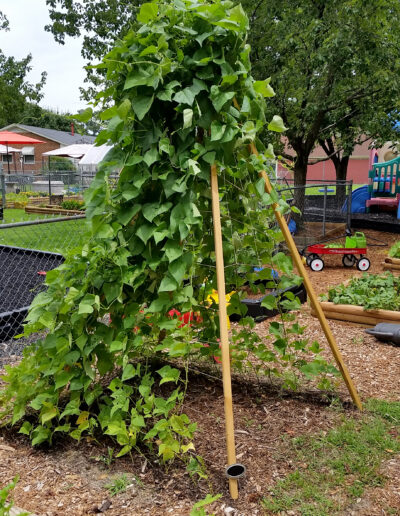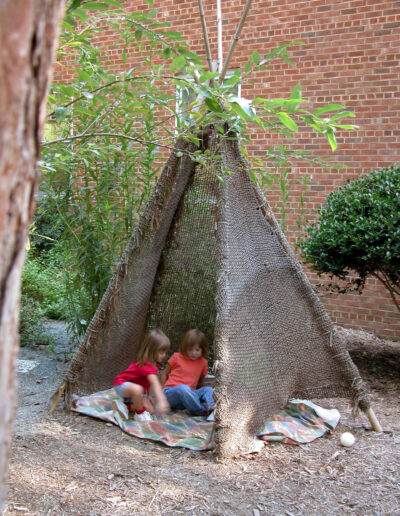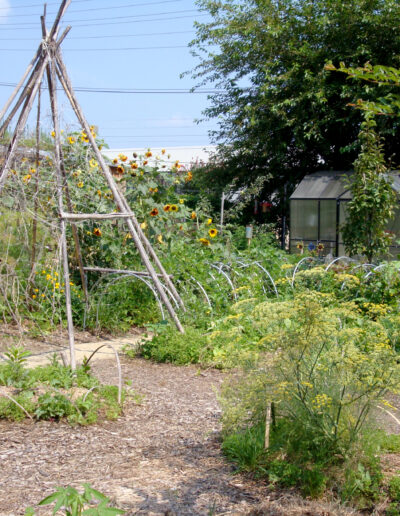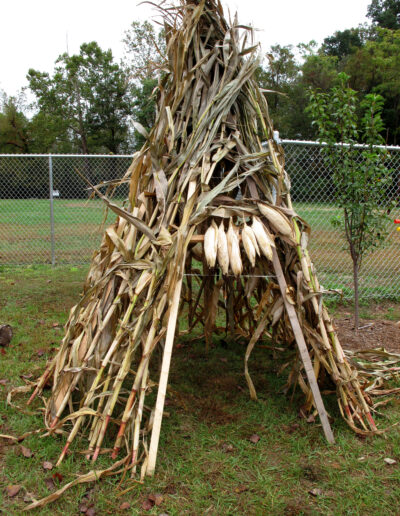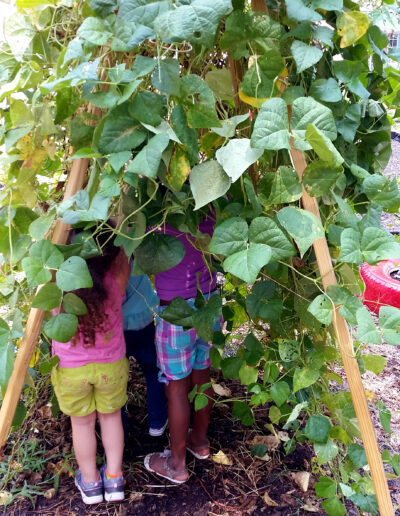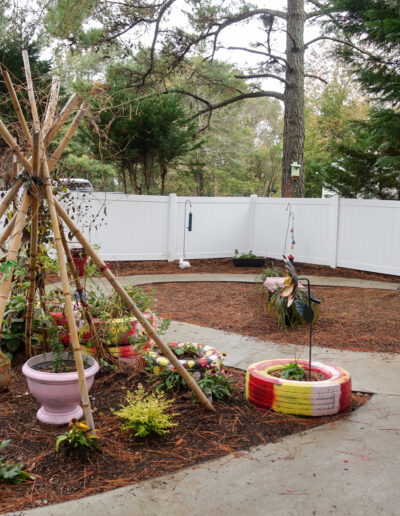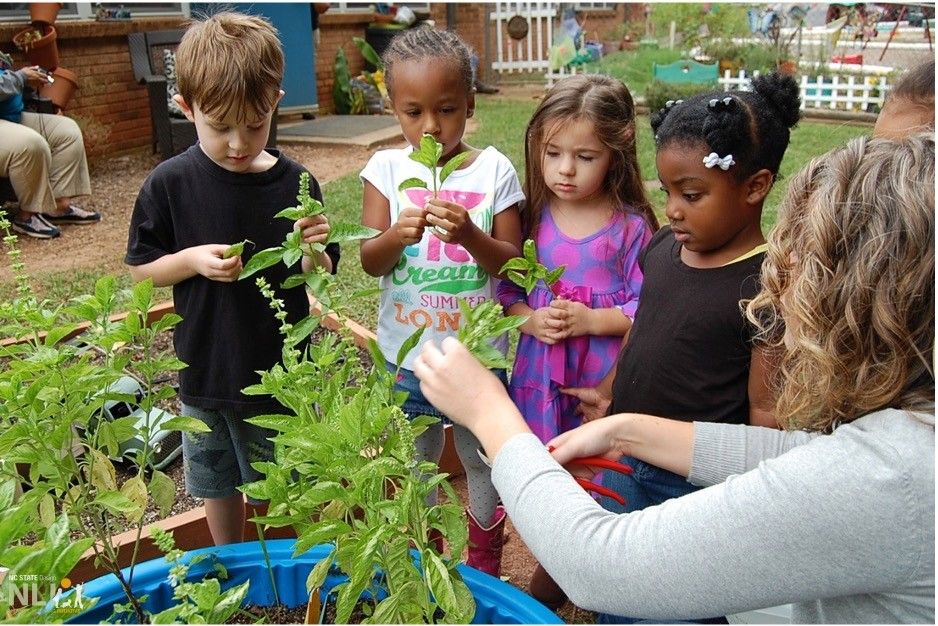07. Conicals
Conicals provide a permanent, pyramidal form of nook for gathering and dramatic play. Constructed from geometrically arranged poles converging at their upper ends, conicals can be created from metal, dimensioned lumber, harvested tree branches, PVC, or bamboo. Sizes range from a small structure for two or three children to a space large enough for a group of ten. Covering can be light fabric or edible vines which provide an attractive “green gathering nook.” Perennial, fragrant vines add sensory stimulation. For detailed installation instructions, see the Vine Conical Installation Guide.
Materials
Structure. A variety of materials can be used for the structure of an outdoor conical. Consider cost and durability when selecting materials. Bamboo is a light-weight, abundant material that can be found for free or at low cost. Felled tree branches are similarly easy to acquire, but will need replacing as the wood decomposes. PVC is another light-weight material that can be easily found at home improvement stores. 1/2-inch rebar and steel are more expensive but will last longer than degradable materials.
Covering. Materials such as burlap or canvas are recommended because they resist weather changes and will show little wear and tear. Weaving colorful, patterned strips of fabric between supporting poles can be a creative and collaborative activity for children to complete a conical. Ensure the covering provides sufficient shade for extended play. Natural materials, such as edible or flowering vines, connect children with nature and add sensory play stimulation.
Location
For a conical covered in climbing vines, select a sunny location with well-draining soil. Locate the conical away from high-activity settings and primary pathways to create a sense of privacy for children.
Size
To create a space that 2–4 children can inhabit, the conical should be approximately 8 feet across and 8 feet tall inside. Structural poles should be 10 feet tall to accommodate an 8-foot wide structure. When building a conical of this size, the entrance should be 24–30 inches wide.
Interior Components
Interior components such as sitting logs, sitting stones, and outdoor blankets create an inviting hide-away for children. Painted rocks, toadstools, garden gnomes, hanging bells, and other decorations enhance play and learning opportunities. Be creative with interior decorations and explore possible themes such as “fairy garden” or “wild jungle” to create an immersive experience. Involve the children in making and implementing decisions.
Supporting Vine Growth
Support is needed for vines to climb and grow around the conical. Once the structure is created, use twine, jute, or a similar string material to weave a “zig-zag” pattern between adjacent conical poles. Plant vine plants at midpoints between poles and add mulch around plants and conical floor. Vines should be trained on the woven twine and poles as they grow. Use “twist ties” to anchor them.
Recommended Vines
Below is a list of popular vines for naturalizing outdoor conical. Annual vines need to be replanted each year, while perennial vines go dormant for the winter and bloom again the following season. Consider desired maintenance plan, available sunlight, and soil quality when choosing conical vines. Runner beans are a popular choice because they grow quickly, have beautiful blooms, and add an edible component to the outdoor learning environment.
Annuals:
Bottle gourd, Lagenaria siceraria
Climbing nasturtium, Tropaeolum majus
Cucumber ‘Mexican sour gherkin’, Melothria scabra
Hyacinth bean ‘Ruby Moon’,Dolichos lablab
Perennials:
Coral honeysuckle, Lonicera sempervirens
Chocolate vine, Akebia quinata
Cross vine, Bignonia capreolata
Hardy kiwi, Actinidia arguta
Passionflower, Passiflora incarnata
Scarlet runner bean, Phaseolus coccineus
Yellow star jasmine, Trachelospermum asiaticum

